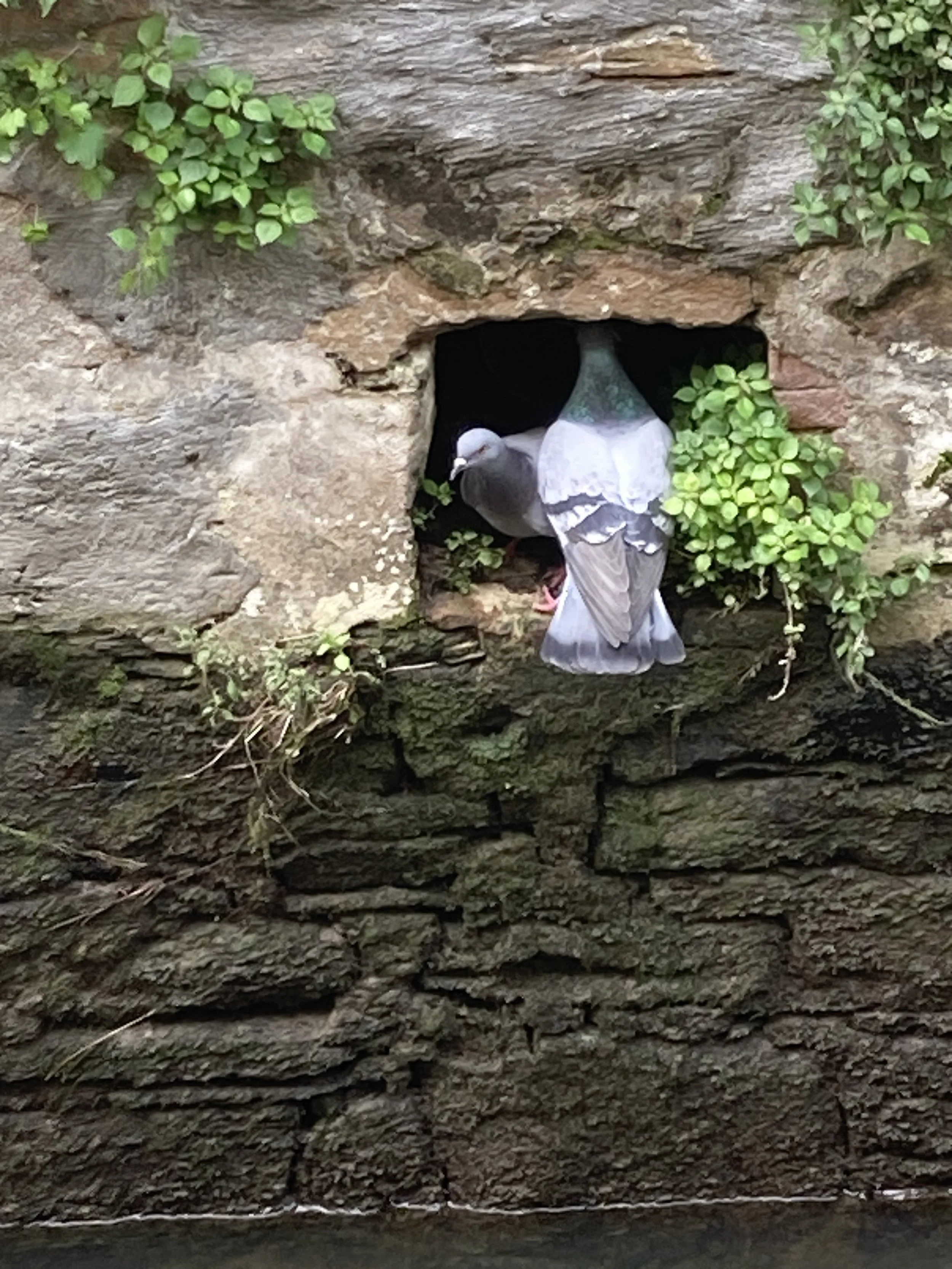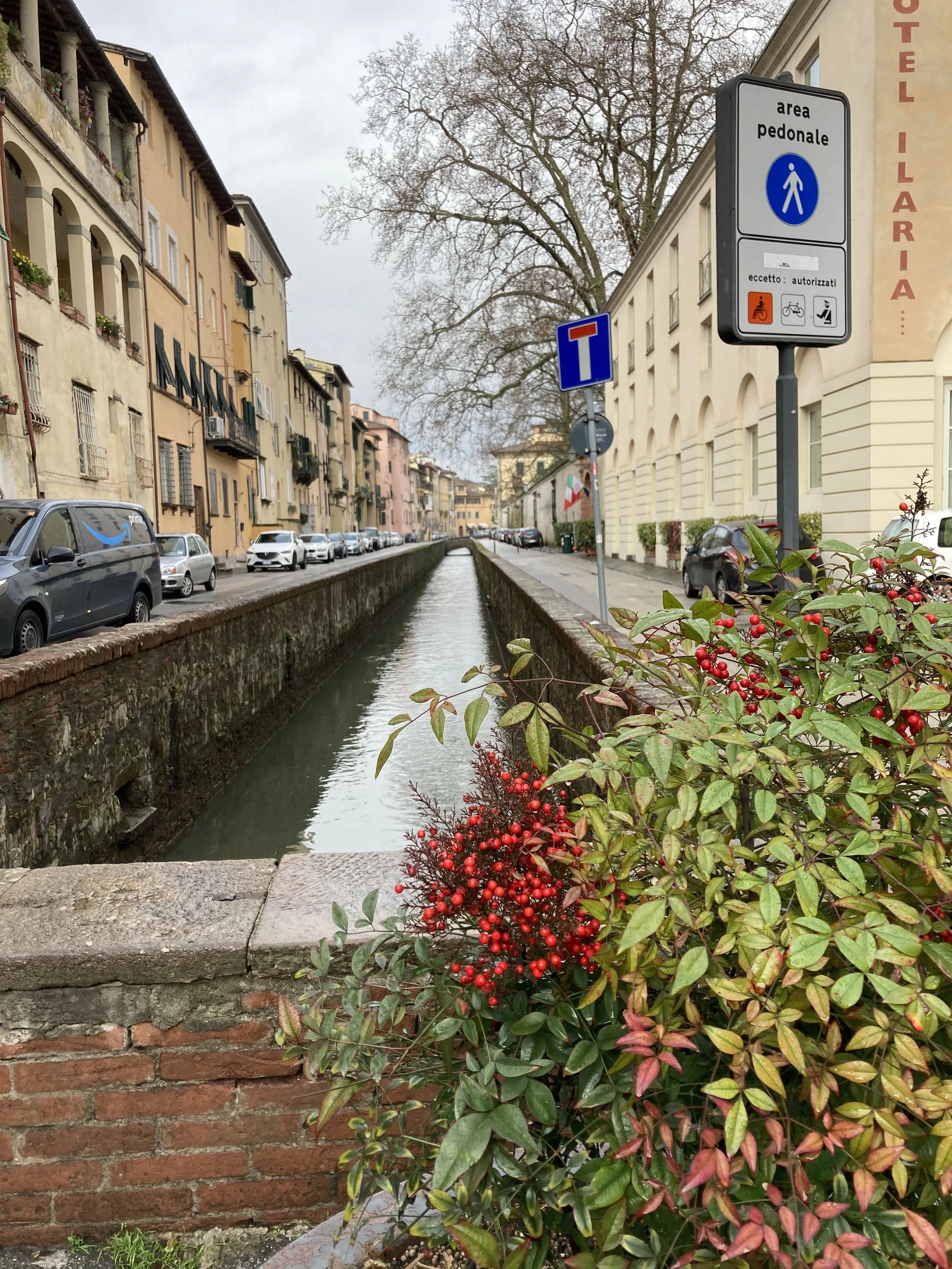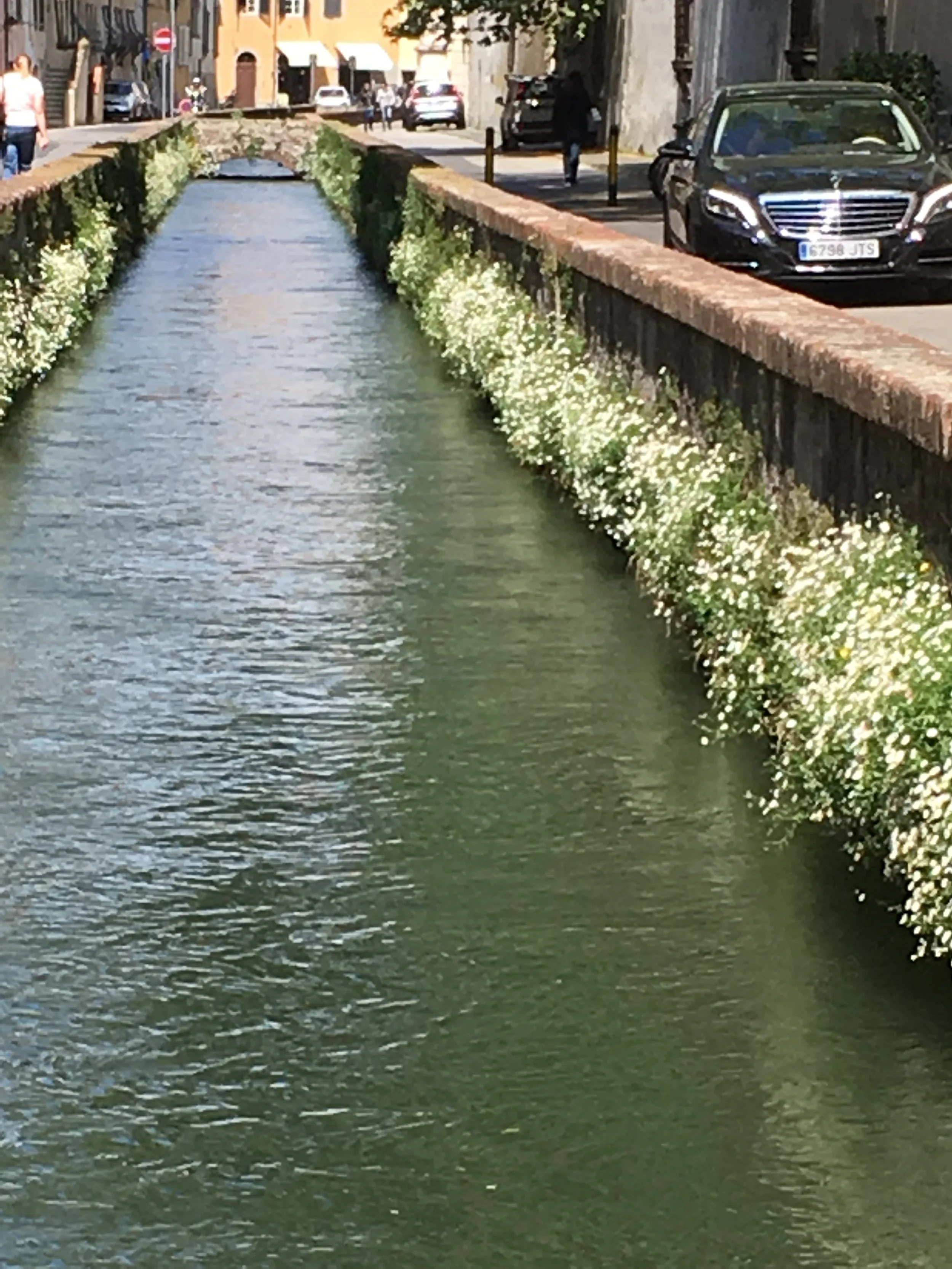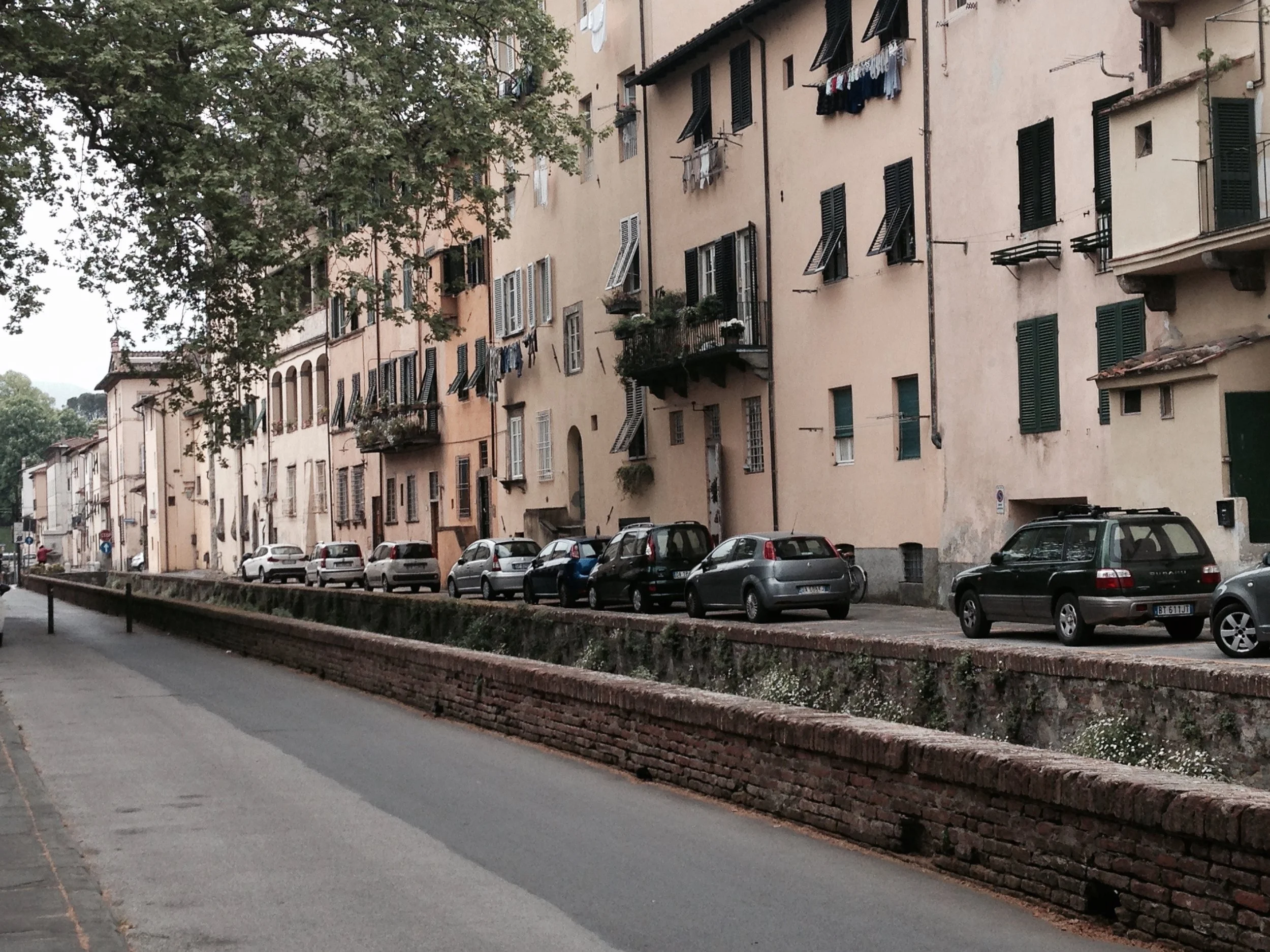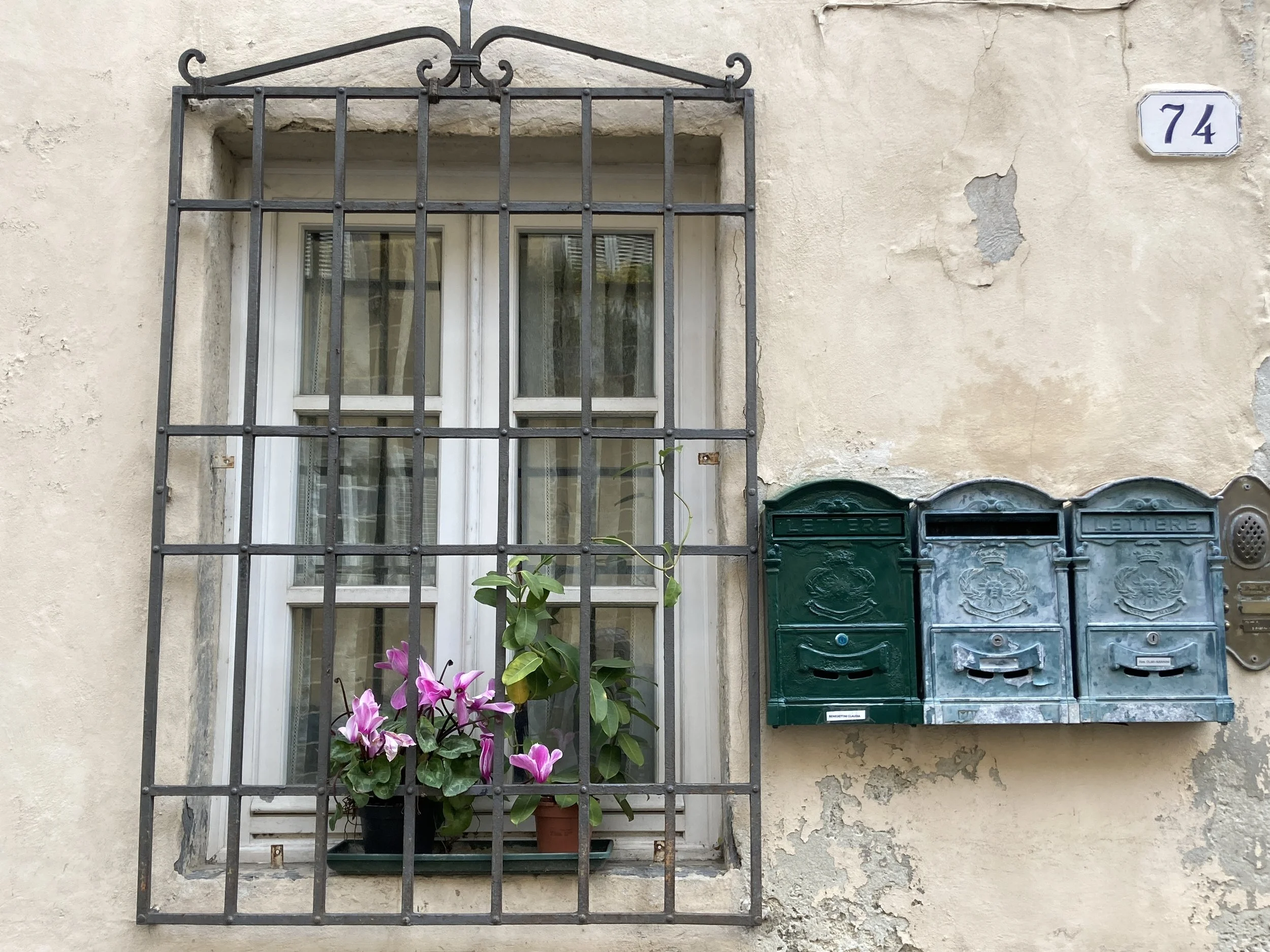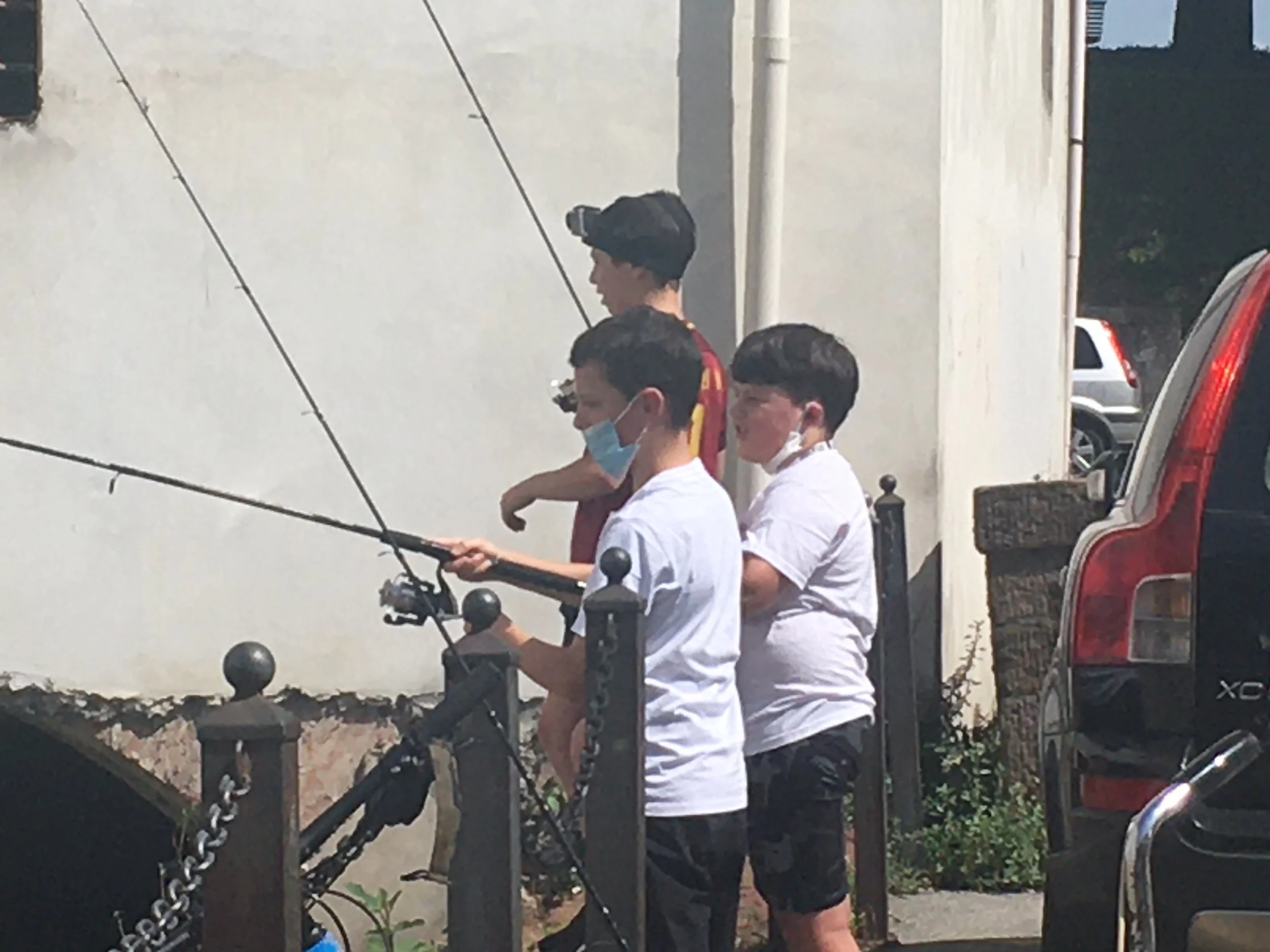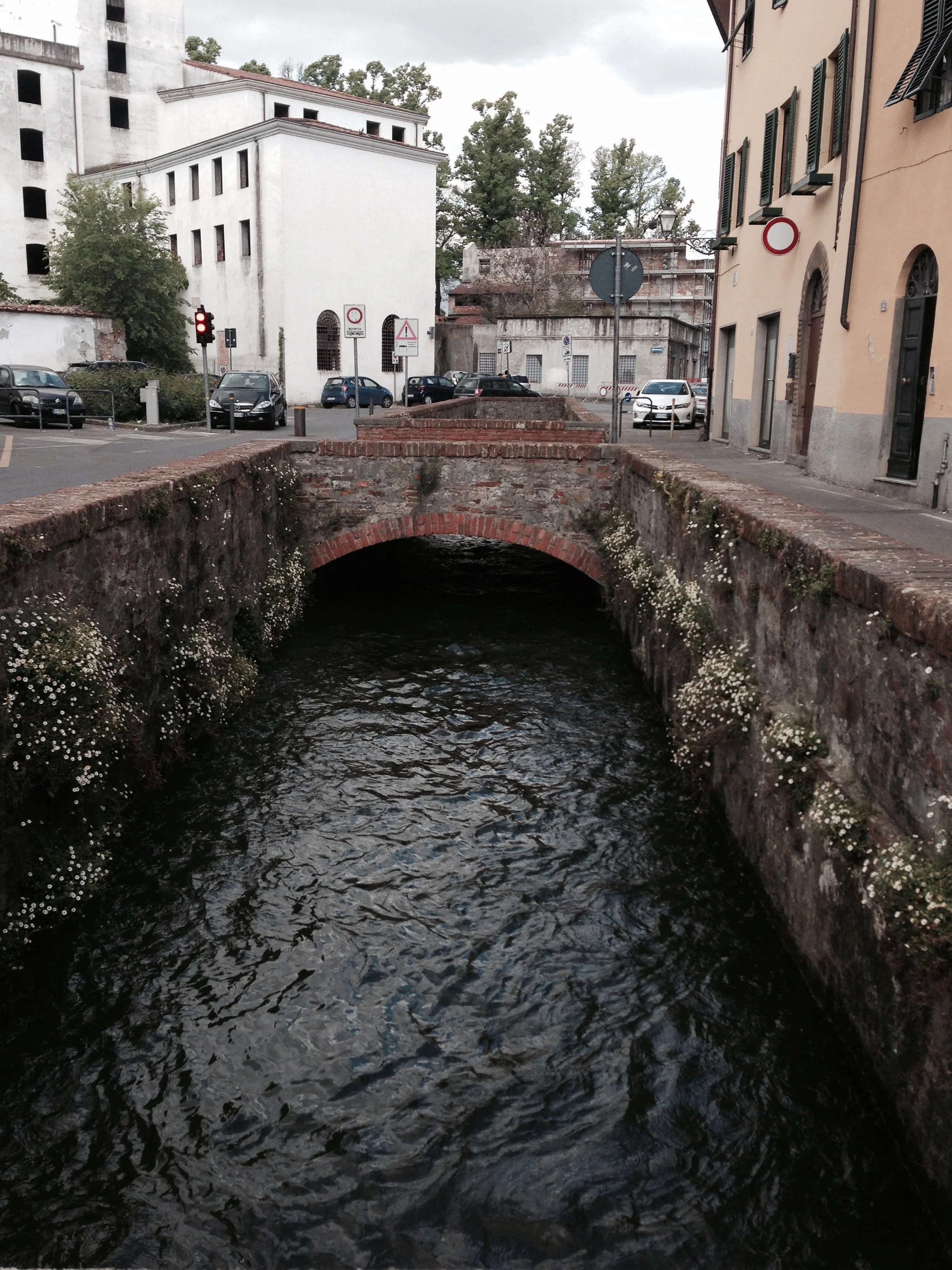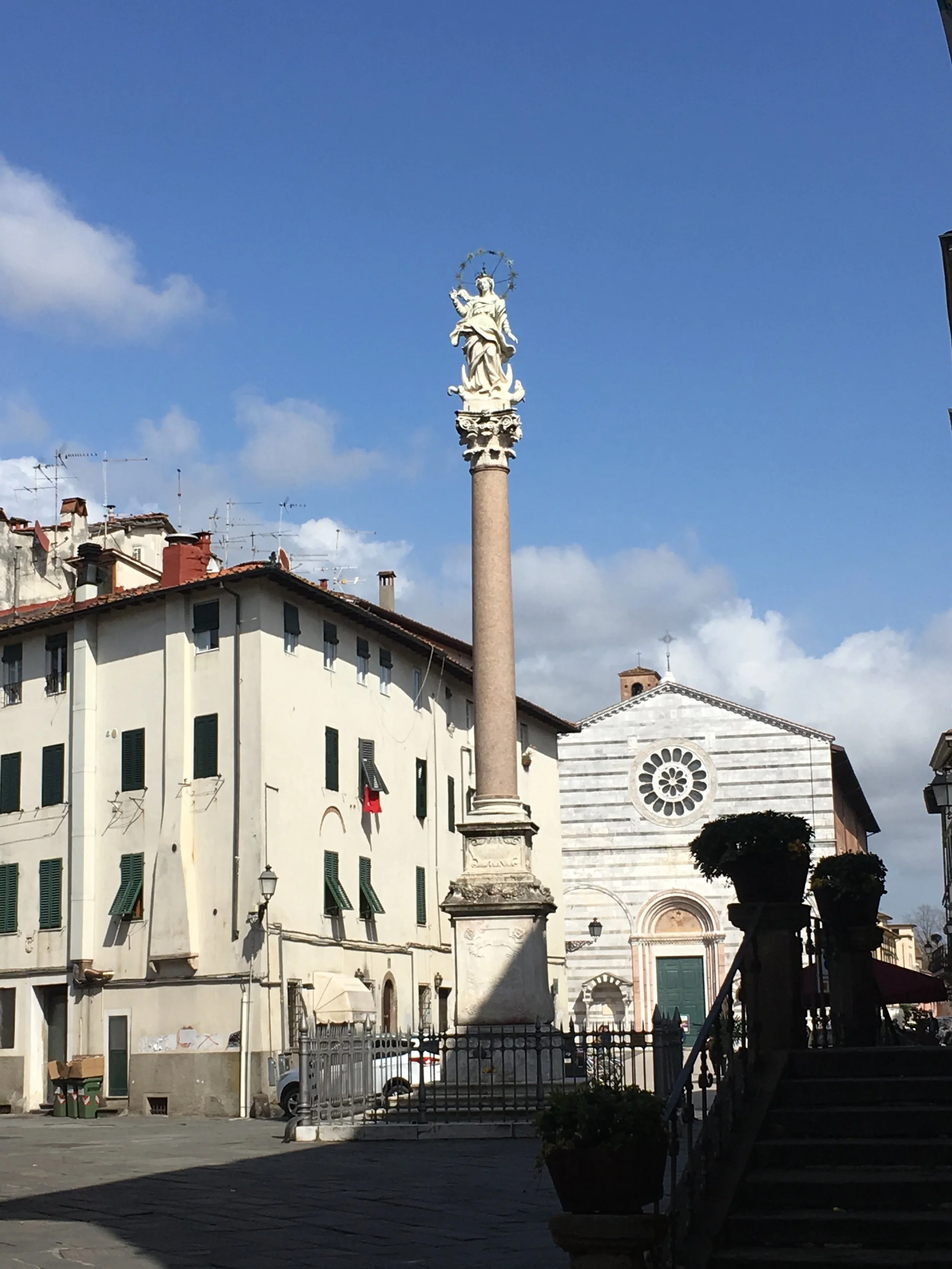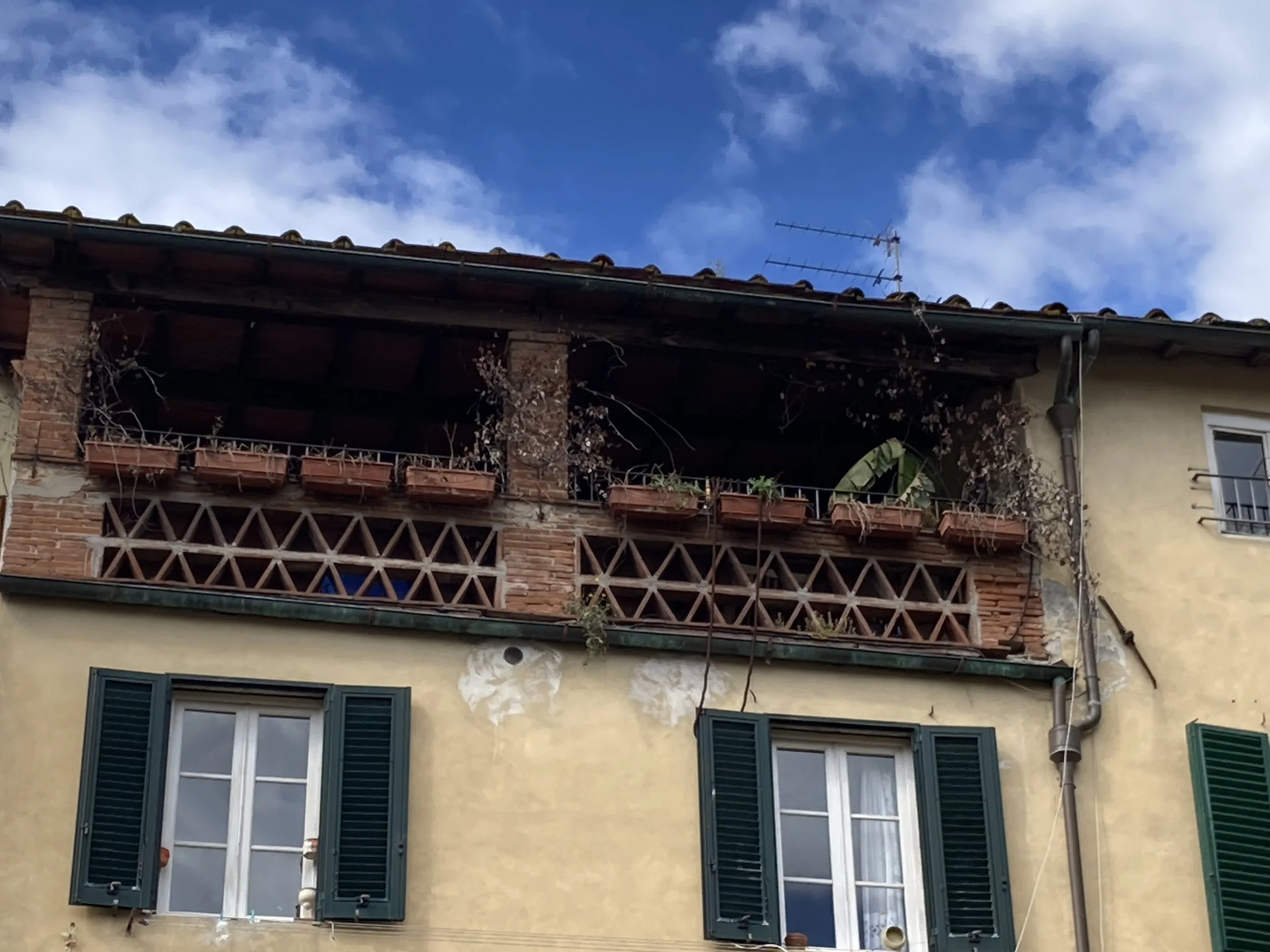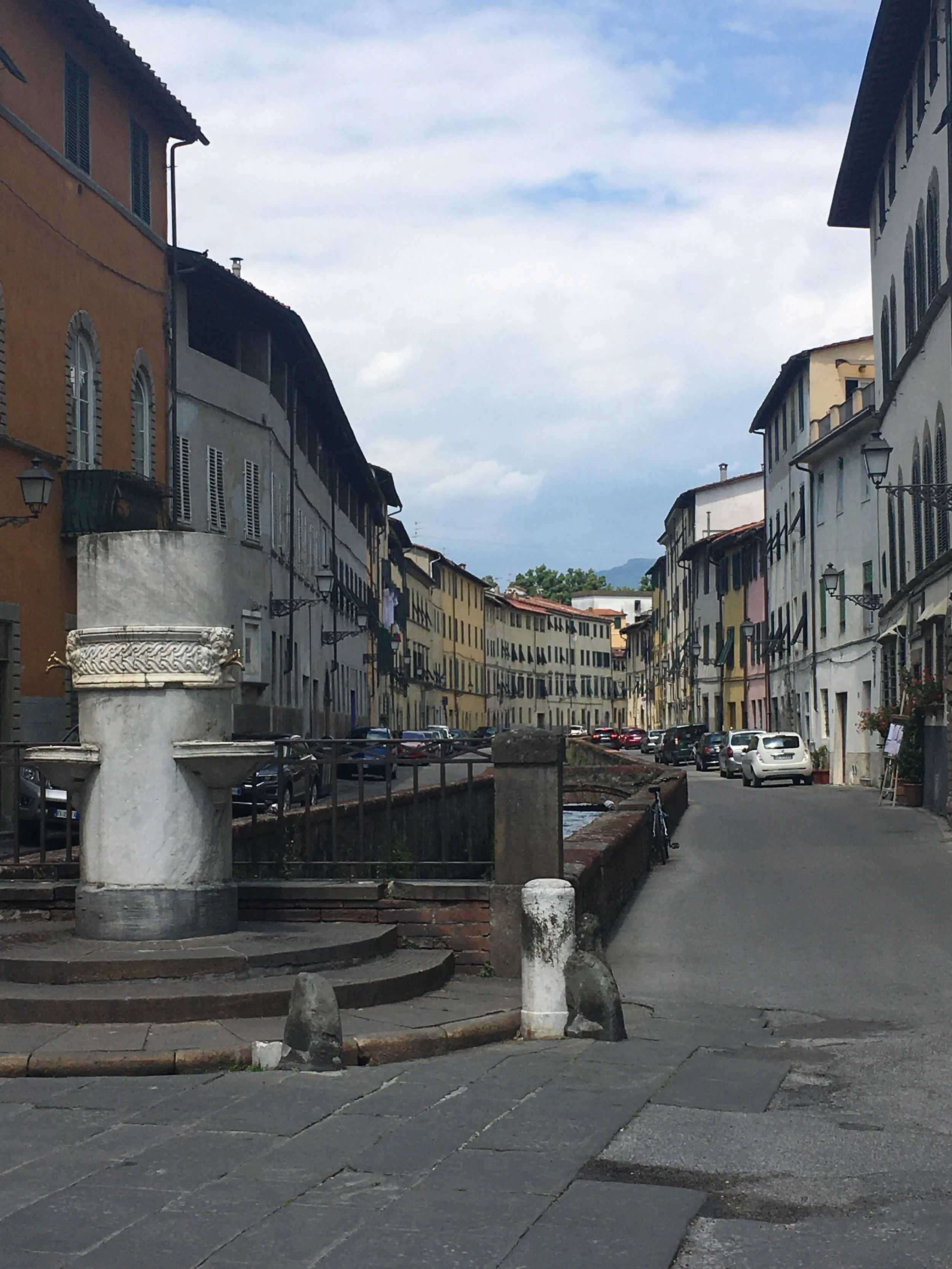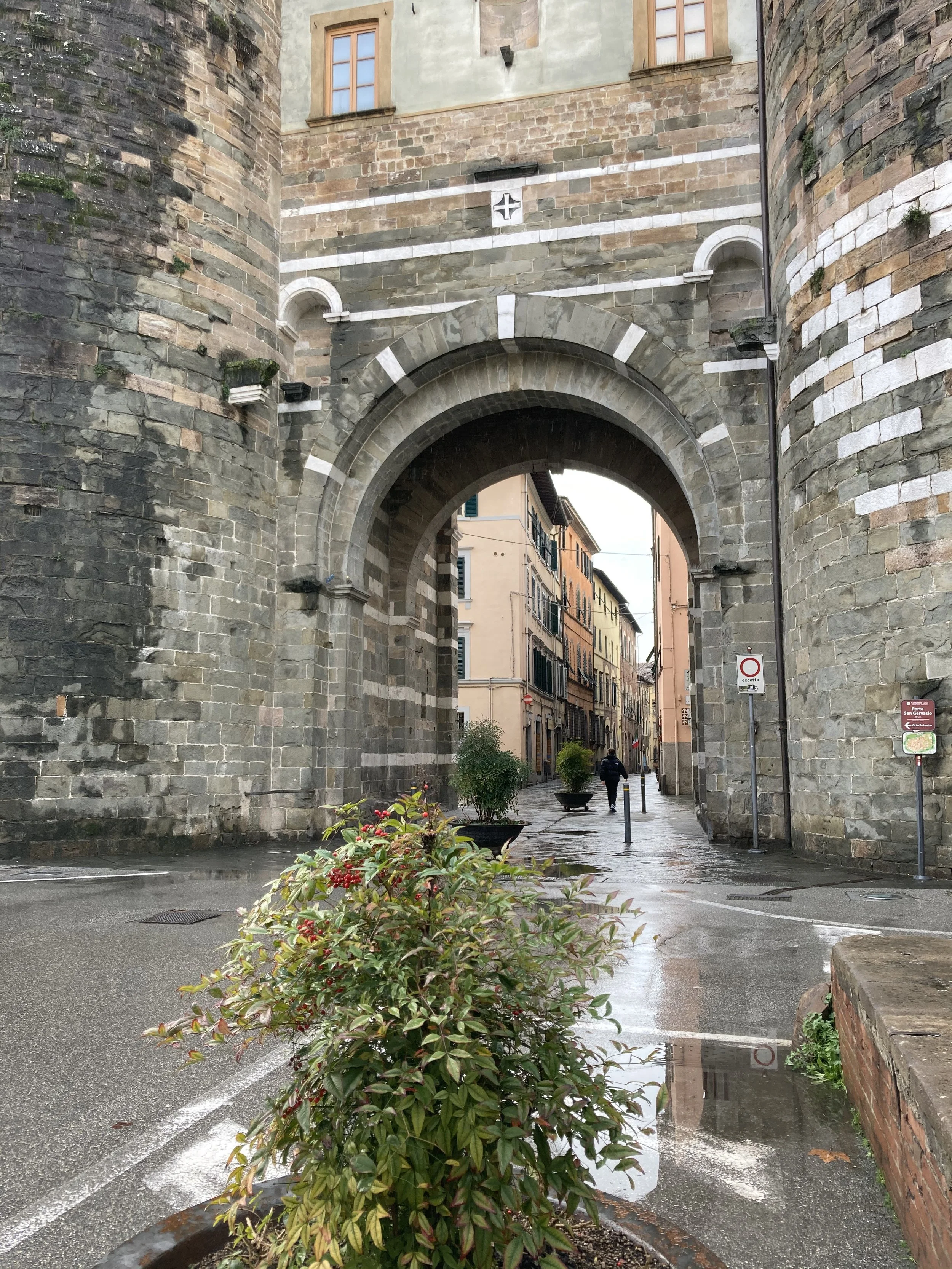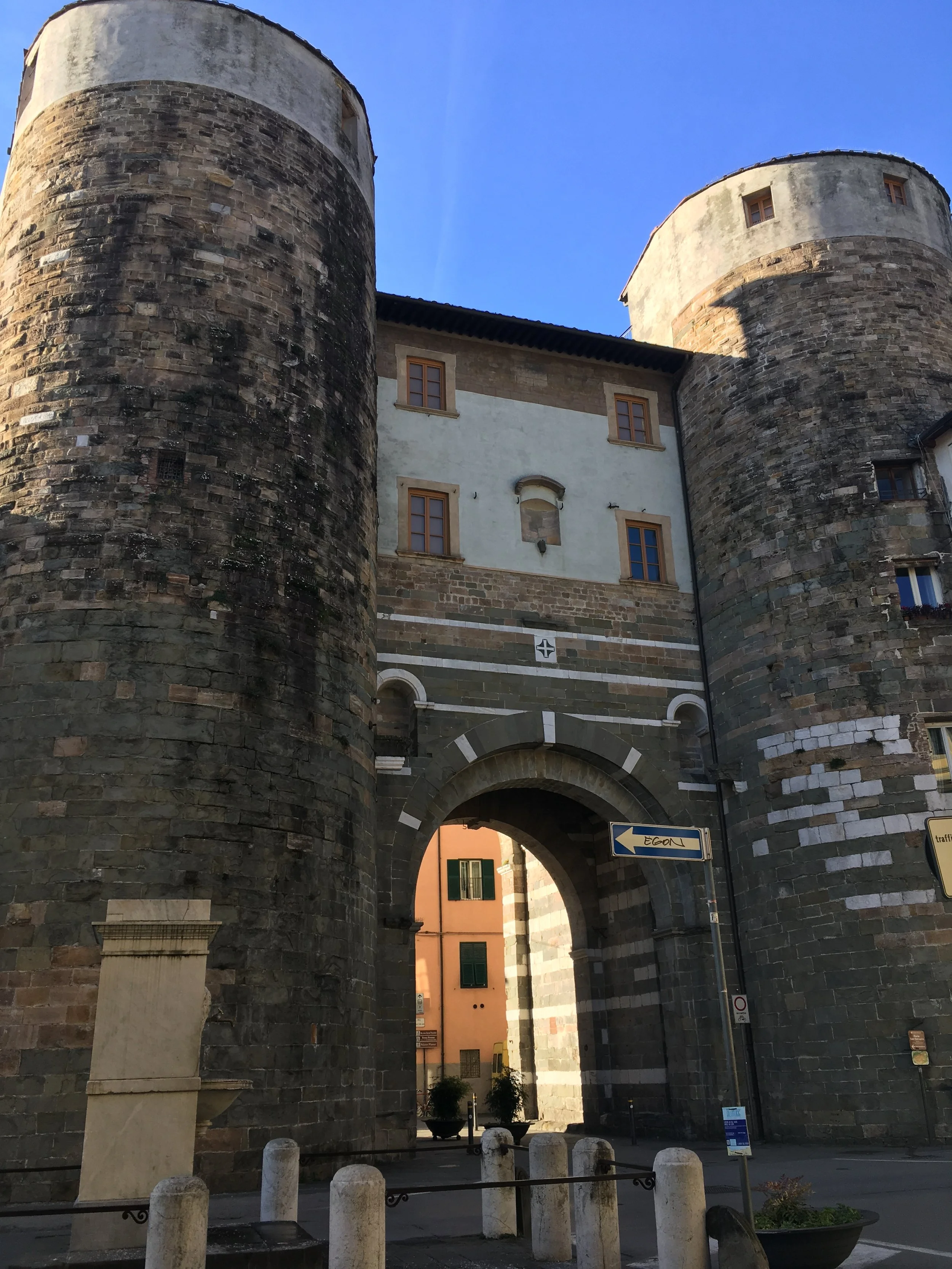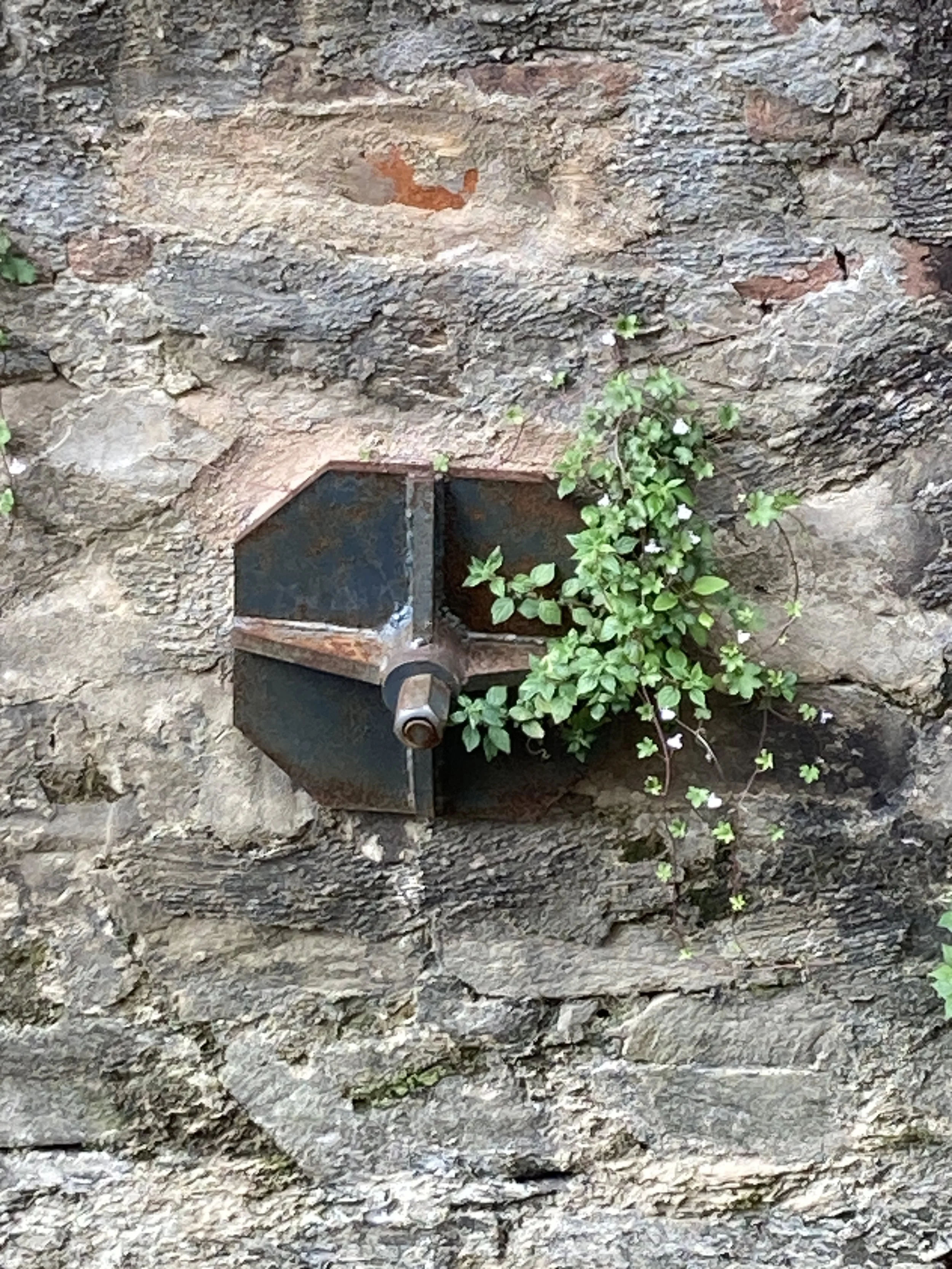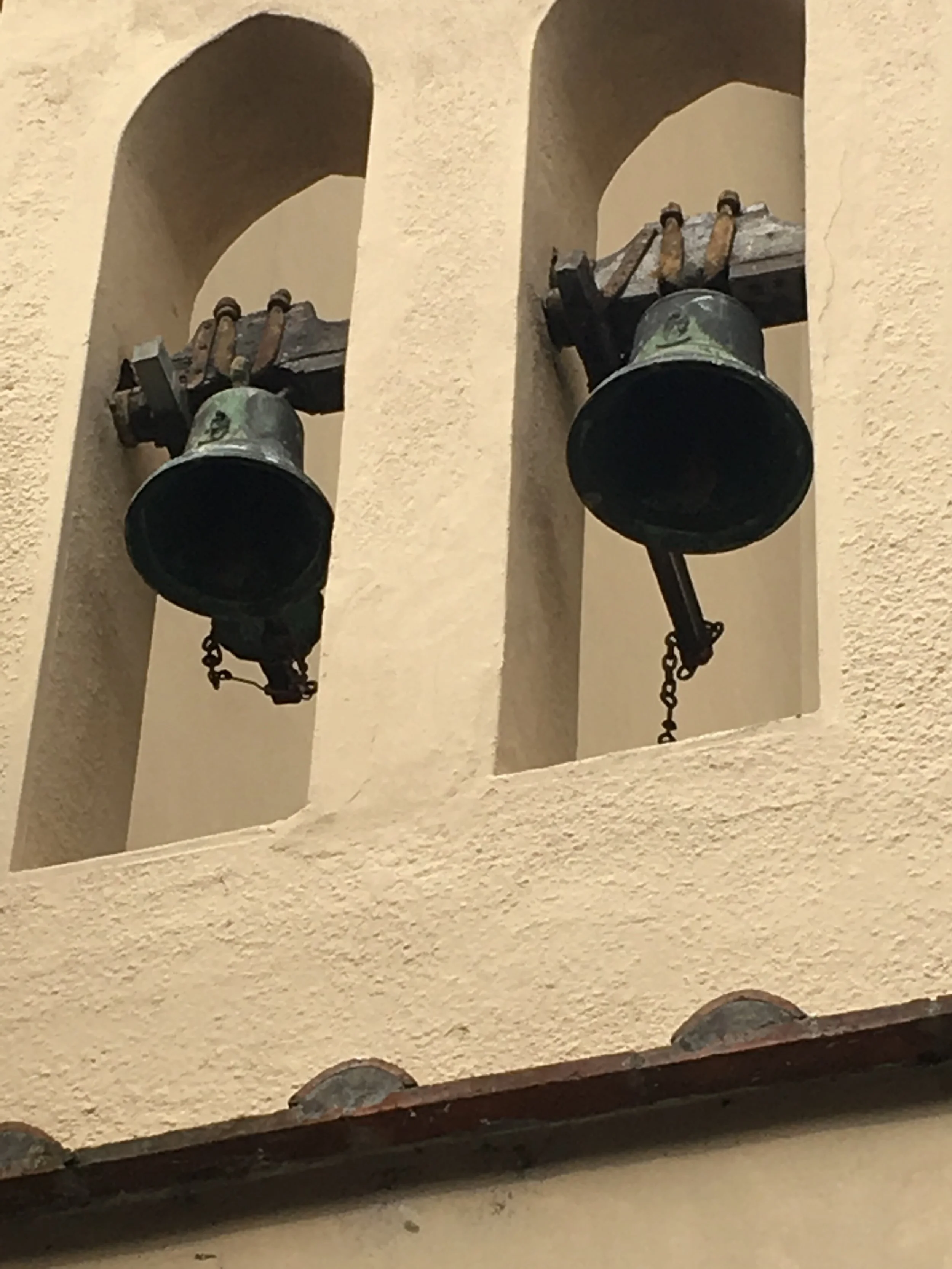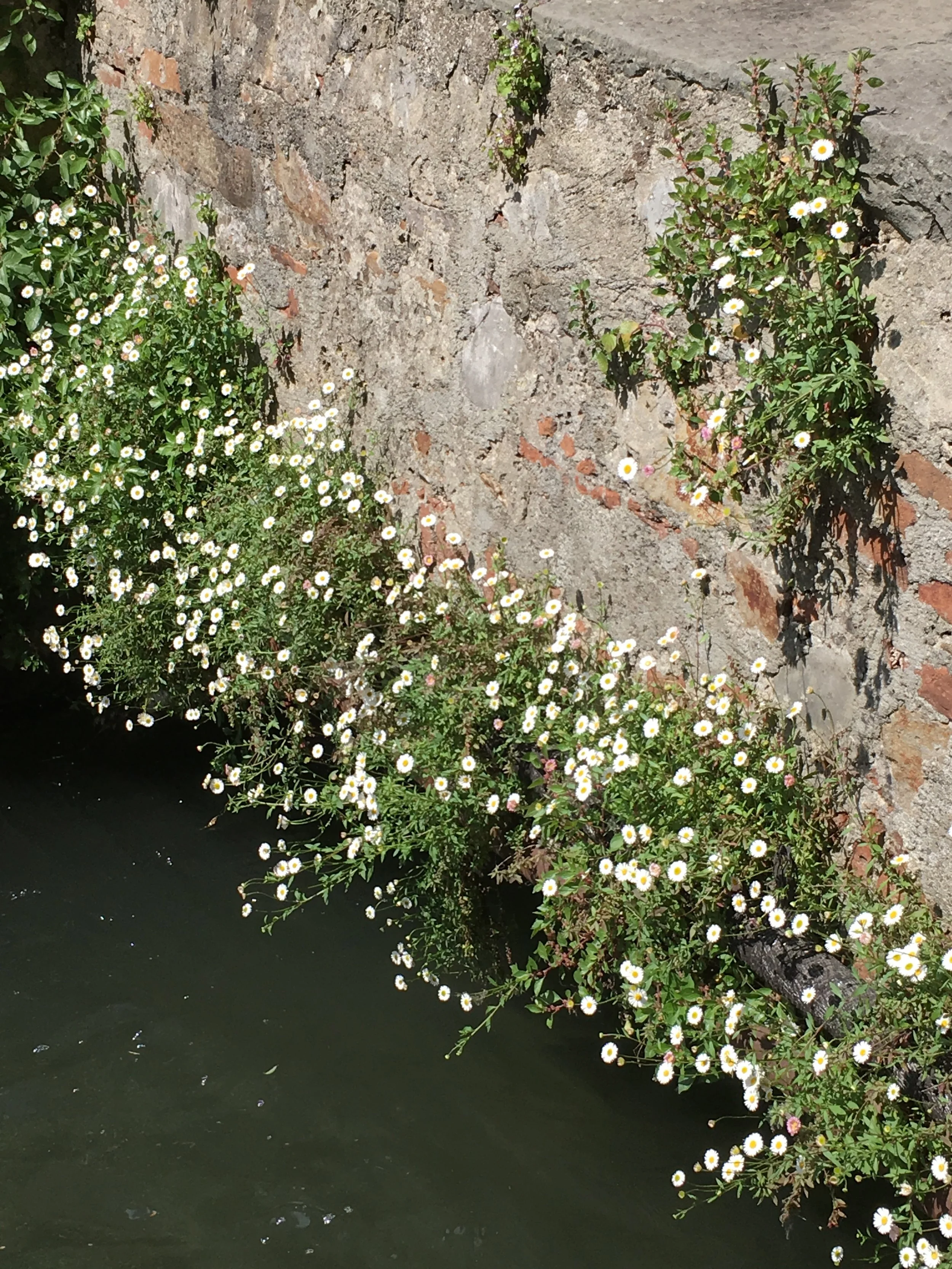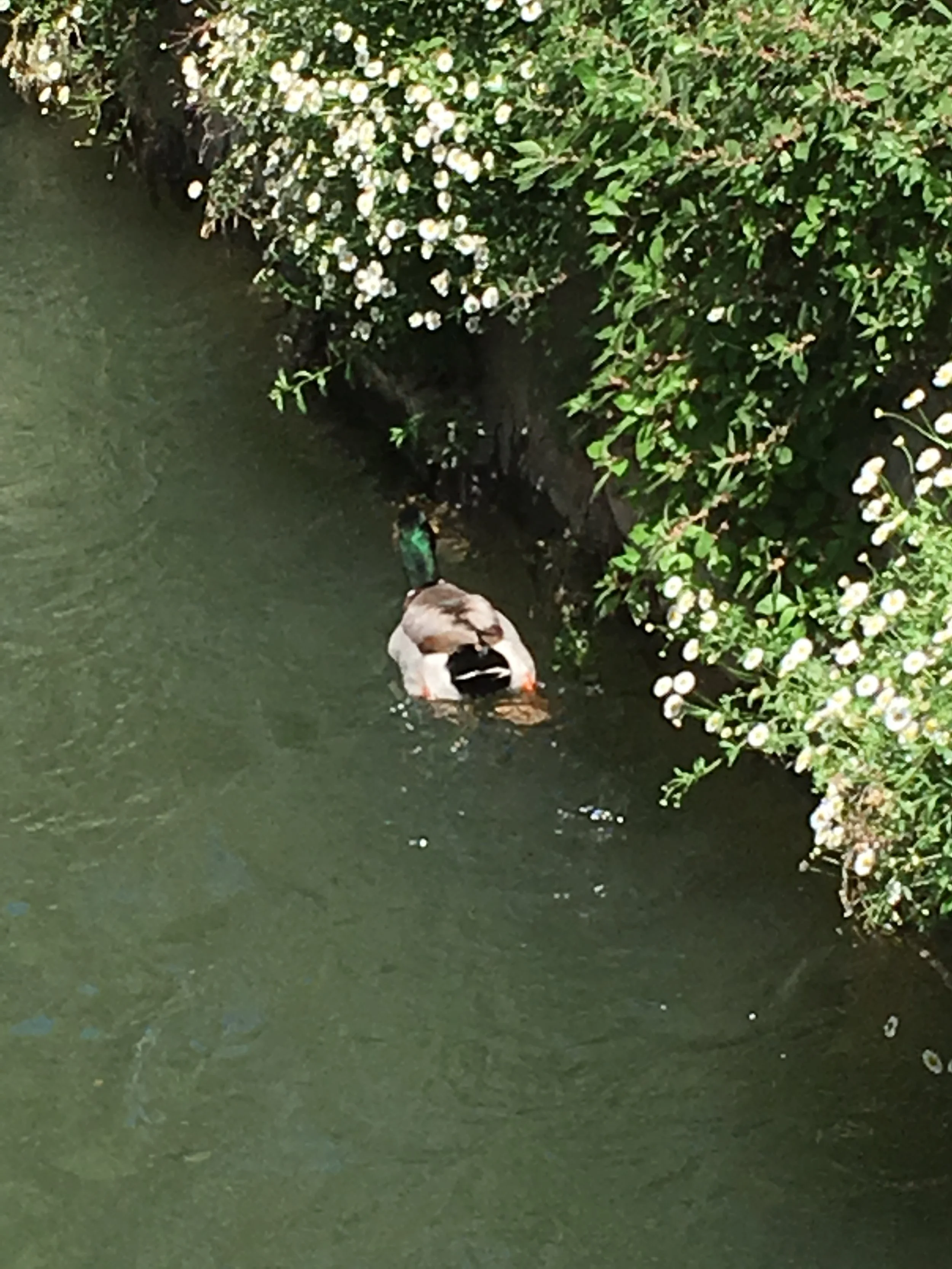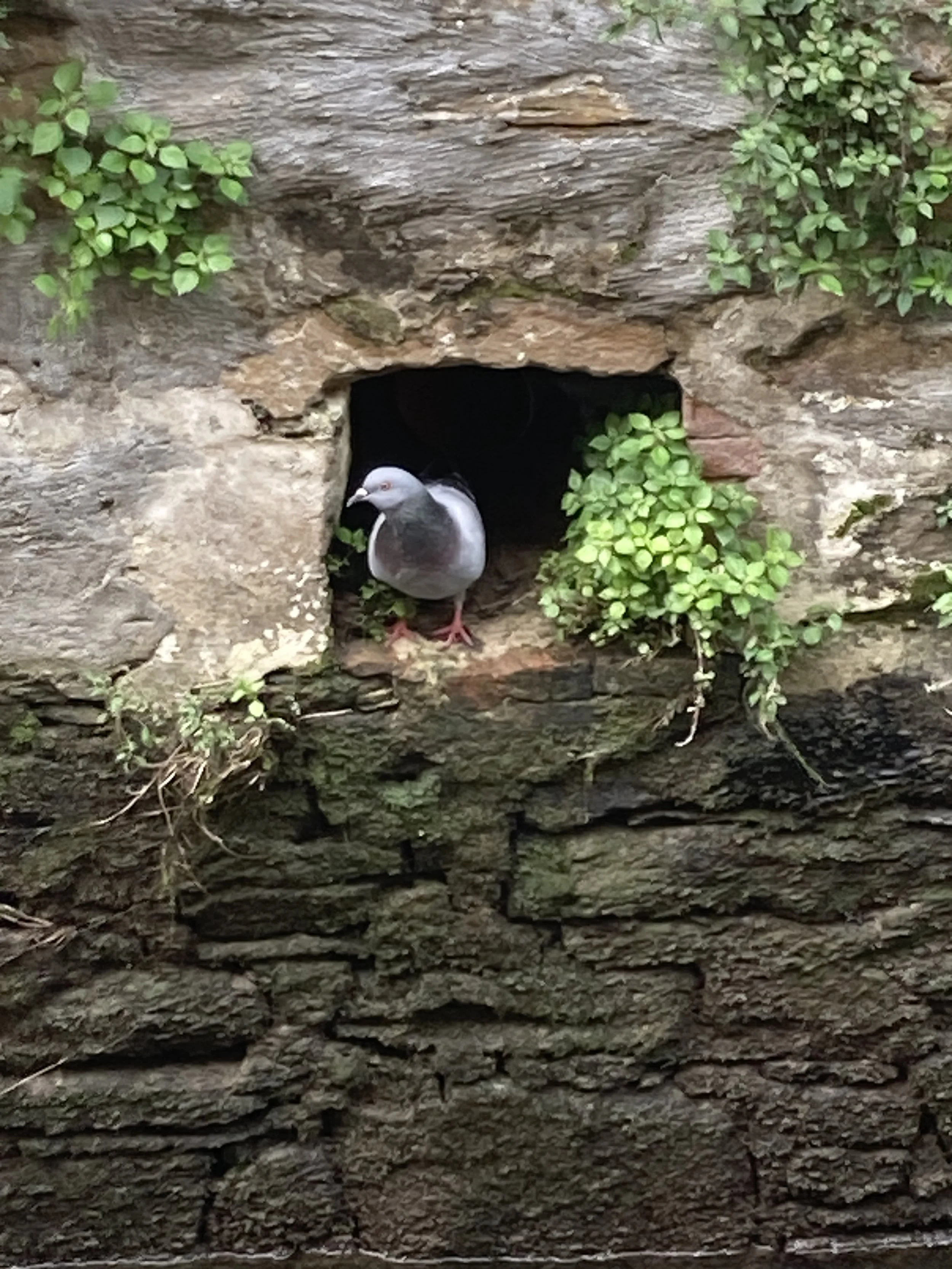Via del Fosso, Lucca’s Canal Street
These birds found a comfortable spot in a little nook just above the waterline of the fosso
There was a time, centuries ago, when Lucca was famous for producing silk fabrics. Beginning around the 11th century, Lucchese weavers threaded gold and silver strands into silk to produce some of Europe’s finest fabrics. The industry grew, reaching its peak in the 13th – 14th century. In addition to the artisans, Lucca had one other essential element needed to produce exquisite fabrics – water.
Via del Fosso, Lucca
The water flowed through a fosso (a ditch or canal) that brought water to the Medieval city from the hills beyond Lucca. The fosso ran a continuous route along the east and south portions just outside of the Medieval city wall. As Lucca evolved, the Renaissance period brought the construction of a new wall, the one that still defines the boundary of Lucca’s historic city center.
The new wall was built well beyond the fosso, encompassing it within the expanded city. The fosso still runs through town, though its route has been interrupted so that it now appears to be a series of separate canals. The longest section lends its name to one of Lucca’s most interesting streets - Via del Fosso. Since it is now a canal in several separate stretches, you may hear locals refer to the street as Via dei Fossi – the Street of the Canals, plural, although the official name is still the singular. Along this street, with the fosso running down the middle, are homes, workshops, restaurants, a hotel, and sometimes pop-up art exhibits. And cars.
When walking the length of the fosso, the first stop is in Piazza Luigi Varanini, at Porta San Jacobo, in the northeastern part of Lucca. This is where the water first tumbles into the canal and begins to fill the fosso. The little guys below thought it was a good spot to catch fish. (Note their pandemic era masks.)
Continuing along Via del Fosso, the water flows under a series of small bridges towards the Madonna dello Stellario statue which stands at the entrance to Piazza San Francesco. On this stretch of Via del Fosso stands a series of connected houses several stories high. Looking up to the open terraces at the top of the buildings, it is possible to imagine that, long ago, cloth would have hung in these open air spaces to dry after being dyed.
One of several fountains designed by Nottolini. A spot where locals and tourists alike stop to fill their water bottles
Just before the statue is one of Nottolini’s fountains – the water is fresh and this a great place to stop to fill up a water bottle.
At this point, the fosso disappears underneath the street to resurface just beyond the statue. From there, it continues along the next section of Via del Fosso, flowing south towards Porta San Gervasio, one of the two remaining gates into the city through the Medieval walls. This is a great place to stop and marvel at the ancient gate with its two round towers and its ceiling of stars under the arches. The canal disappears again under the street and reemerges quickly, along with another fountain, to continue making its way towards the walls.
At the southern end of Via del Fosso, both the street and the canal make a sharp turn to the west towards Via della Rosa. A little ways up Via della Rosa stands one of Lucca’s smallest and most historic churches, Santa Maria della Rosa. The church was built up against Lucca’s earliest wall, the Roman one. Inside the church is one of the few places in Lucca to see the remains of the Roman era wall. This detour is well worth making!
Corso Garibaldi in springtime. No longer a visible fosso, but gorgeous Magnolia trees in bloom.
If one were taking this walk centuries ago, from Via della Rosa the canal would have continued flowing west along what is now Corso Garibaldi. However, in 1821 the canal was paved over at this point and it now flows unseen below the busy street. Today, Corso Garibaldi is known not for its fosso but for its Magnolia trees. But keep going - a fosso walk doesn’t end here, even if the canal seems to.
Walking to the far end of Corso Garibaldi (hopefully in spring when the Magnolias are in bloom) leads to Via della Cittadella where, just beyond the parking lot, the fosso resurfaces for a short stretch before tumbling underneath the wall and out onto the green space beyond where it becomes a smaller ditch.
A walk along the fosso is wonderful in any season, but especially in early summer when wildflowers bloom along the stone walls. The houses and balconies, often with flower filled terraces and hanging laundry, add to the atmosphere. Looking into the waters of the fosso, sometimes fish can be seen swimming and occasionally a duck will float by. Birds like to hang out in some of the niches in the stone.
Via del Fosso is a bit outside the area where tourists tend to congregate so it has a quieter and more authentic Lucchese vibe - another reason to include a walk along the fosso on any visit to Lucca.
